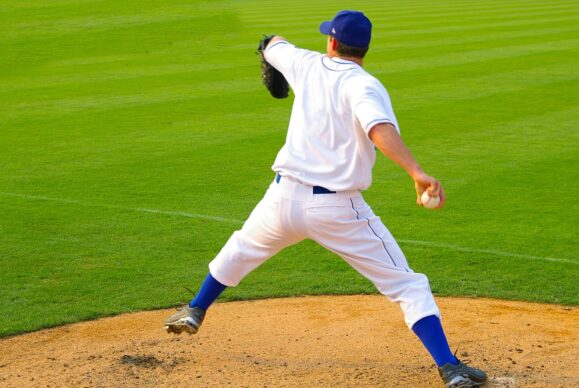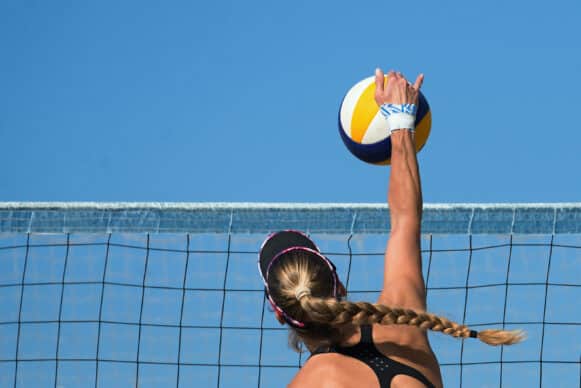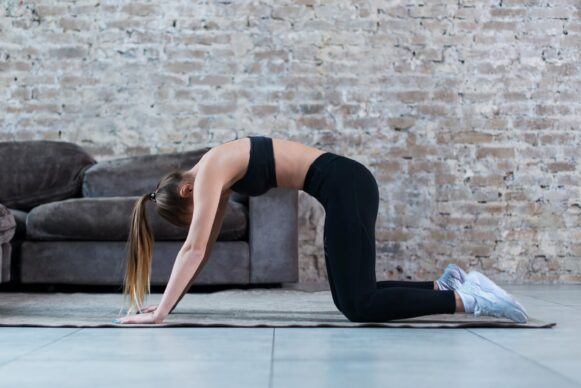By Miles Nicholas, PT, DPT, CSCS, FDN-C
The physical demands of tennis involve a significant volume of lower extremity “plyometric” activities. These plyometric activities include all of the “elastic” and “bouncy” movements that involve a landing component directly into a take-off component. Hopping, jumping, leaping, bounding, and skipping activities all fit into this category.
Due to these significant plyometric demands, the tennis athlete is susceptible to calf injuries and achilles tendinopathy (tendon pain). Decreased achilles tendon stiffness and reduced calf musculature performance, which occur naturally over the lifespan, further increase this risk.
This two-part series will cover all things calf injuries, achilles tendinopathy (tendon pain), and plyometrics, with the focus of this first part on plyometrics and calf injuries in tennis. We’ll save the discussion of tendinopathy for part two.
Plyo Intensities
Plyometrics can be subdivided into “extensive” and “intensive” plyometrics (plyos). Extensive plyos are low/medium intensity, smooth, and rhythmical movements that consist of much of the tennis skill represented by impressive footwork. These are seen while waiting to return a serve/shot and when repositioning the body/racquet to put oneself in the right position to respond to an opponent’s shot. Intensive plyos are the high-intensity, aggressive movements that are utilized when a tennis player needs to vigorously change their momentum or where their body is located on the court. Keep in mind, this isn’t so much the sprint to cross the court, but the movement where the athlete violently changes direction in order to begin that sprint.
Extensive plyos involve a significant ankle component with varying contributions from the knee and hip, while intensive plyos require a significant contribution from the ankles, knees, and hips working in unison. This means that the calf musculature and achilles tendon will experience high loads throughout tennis participation as the calf/achilles complex can be considered the “workhorse of the ankle.”
Muscles of the Calf and Injury
The calf musculature consists of two muscles: the gastrocnemius (gastroc) and the soleus. Both of these muscles contribute to plantarflexion of the ankle, which is the push-off during jumping or pressing down of the gas pedal. These two muscles, while similar, have some notable differences. The gastroc functions as an explosive-strength plantarflexor when the knee is relatively straight, with little contribution if the knee is significantly flexed. Due to this function, it’s the likely culprit if an athlete feels a sudden onset of acute pain during an aggressive change of direction movement on the court. The soleus functions as the endurance plantarflexor, regardless of what position the knee is in. If someone develops the slow onset of lingering calf pain/”tightness” during and following tennis activities for weeks to months, then a soleus injury is more likely. A physical therapist will usually be able to determine the sensitive tissue based upon the athlete’s description and some clinical testing.
Following an acute grade 1 calf strain (no visible swelling/bruising), a brief period (1-3 days) of rest will be beneficial. During this period, emphasis should be placed on walking quality with use of a crutch or pair of crutches in order to offload the calf if needed. If it’s too painful to walk normally, even with crutches, then the athlete can carry the limb (non-weight bearing) for a short time period. It’s important to avoid passively stretching the injured muscle during this time frame.
The next step in the rehabilitation process involves exposure to isometric activities that lightly load the healing muscle in a static position. Once isometrics are well tolerated, a calf raise progression can begin.
4) Calf Raise Isometric Exercises
Here are a few examples of calf raise isometric exercises you can do next to a wall or handrail.
DL Calf Raise Isometric
SL Calf Raise Isometric
2 Up / 1 Down Calf Raise
SL Calf Raise
Restoring Tolerance
Following the progression to weighted single-leg calf raises off a step, it’s time to begin restoring tolerance to low-loadextensive plyos. At this point, light court-based activities might be initiated.
DL Pogo Hops
DL Lateral Pogo Hops
SL Pogo Hops
From this point forward, it’s important to progress toward intensive plyometrics as court activities are advanced. This entire process following a grade 1 strain may take as little as 2-4 weeks but will likely take 3-6 weeks, with the return to full tennis activities being based upon no pain and high function.
Following return to full tennis activities, we recommend continuing with calf strengthening and plyo activities 2x/week to reduce the risk of re-injury. Your physical therapist can help you determine how to fit these activities into your weekly schedule, but performing after tennis activities are finished for the day is recommended.
Managing Calf Pain and Physical Therapy
If you are looking for assistance in managing an acute calf strain or persistent calf pain, the physical therapists at Evolution should be your first call. We can provide you with:
- A detailed workup to determine the relevant diagnosis/prognosis
- Advice and education on how to proceed over the next days to weeks
- Exercises to promote both tissue healing and athletic reconditioning
- Manual therapies to facilitate symptom management
- Workload management in your return to athletic activities
- The reassurance that you will return to your normal life and tennis activities




